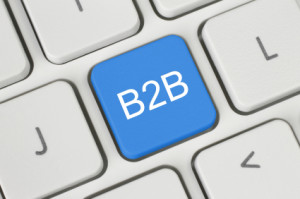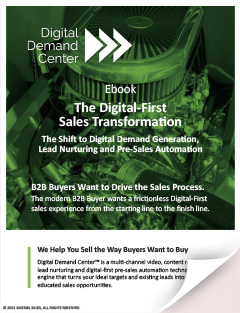 Generating leads for business to business companies is no longer as simple as attending a trade show or advertising in an industry trade magazine. Business to business lead generation now requires reaching your prospects online and offering them quality marketing content to engage with in exchange for their contact information.
Generating leads for business to business companies is no longer as simple as attending a trade show or advertising in an industry trade magazine. Business to business lead generation now requires reaching your prospects online and offering them quality marketing content to engage with in exchange for their contact information.
A mature business to business lead generation strategy is comprised of three parts: digital content marketing, search engine optimization and marketing automation. These three aspects are interrelated and success in implementing one will ultimately lead to success with the others. We will now give a brief overview of each aspect and discuss how they work together.
- Digital Content Marketing
In order to generate a lead, you need to get your prospect’s contact information. In order to get your prospect’s contact information, you need to offer something in exchange. That something is marketing content. What form the marketing content takes can vary greatly (i.e. blog posts, press releases, newsletters, white papers, webinars, videos, slideshows, checklists, etc.), but it needs to be valuable in some way to your ideal customer. People find things valuable that are entertaining, helpful, newsworthy or inspirational. Most of your B2B content will find value in its helpfulness, so checklists, educational webinars and informative white papers are a good place to start.
2. Search Engine Optimization
The amazing digital marketing content you create will do you no good unless people can find it. This is where intelligent SEO comes in. In order to make sure search engines like Google can find your content and get it to your prospects for lead generation, you need to optimize each piece of content you create with the most relevant and regularly searched keywords. You also need to optimize your website’s infrastructure to make it easier for search engines to navigate your site quickly (i.e. pagination, categorization, tagging).
3. Marketing Automation
While not a B2B lead generation strategy per se, marketing automation helps you keep track of and manage leads as they come into the pipe. Because you are casting a much wider net with content marketing and SEO than you did with tradeshows or industry magazines, you need to be able to track a large number of prospects and know where each came from. With marketing automation, you are able to see how and when prospects are engaging with your content (i.e. did they find your white paper from a pay-per-click ad or an email campaign?)—giving you insights into where each prospect is in his or her buying cycle and how to tell sales to proceed. Because marketing automation tracks content engagement in this way, you are also able to determine which of your lead generation strategies are most effective and refine your process for the future.
For more on business to business lead generation, you can read Top 10 Tactics for More Effective B2B Lead Generation You Can Implement Immediately. If you would like to learn about the business to business lead generation services we offer, you can visit our services page.
If you have any questions, please feel free to contact us.




